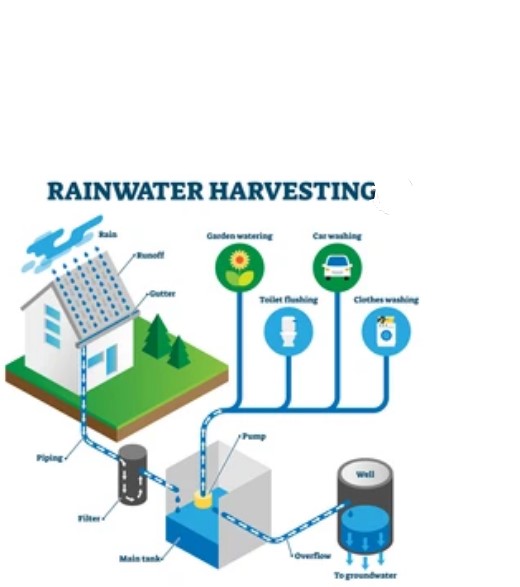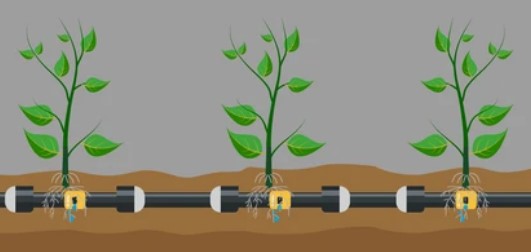Water Distribution system
The distribution of water around the world is highly unequal owing to a number of causes. Some locations get an abundance of rainfall while other regions like deserts receive limited or hardly any rainfall.
There are some locations In India which get excessive rainfall, resulting in flooding, while others receive very little rainfall, resulting in drought. Thus, India is a vast nation, and rainfall varies from region to region. Consequently, certain sections of our nation may experience sometimes flooding or drought.
Case study of water distribution in a part of Rajasthan and Gujarat
Since India is a nation where the rainfall is not the same everywhere, places like Rajasthan have extremely little rain and consequently have less water, which, sometimes, may result in droughts. In contrast, locations like Meghalaya have heavy rainfall, resulting in flooding.
In Bhujpur, located in the Gujrat region of Kutch, the rainfall is very irregular. The sole supply of fresh water in these regions, where rivers are dry throughout the year, is subterranean water. As the demand for water has increased over time, groundwater extraction has significantly outpaced recharging, and thus, the water table has dropped.
In 1989, the villagers and the non-governmental organization started collecting rainwater by constructing 18 check-dams on the Rukmavati river catchment areas. Owing to this, the newly collected water boosted percolation through the soil and refilled the reservoir, keeping the freshwater from mixing with the saltwater and filling the wells.
India's Water Resources
India gets more precipitation in the form of rain and snow than the rest of the globe combined. The average annual precipitation in India is 1,170 millimeters, compared to 700 millimeters globally. The India rainfall map depicts average rainfall in various regions of our nation.
Water Management
Water Management is the activity of planning, developing, distributing, and controlling the best use of water resources. It is a subset of management of the water cycle. Leaking water supply pipes and excessive water spilling from the pipes constitute water waste.
The municipal authorities are responsible for preventing this waste of vital water. Mismanagement or wastefulness may also occur at the individual level. We all spend water, whether deliberately or unwittingly, thus we should also take see to it that we don’t waste water unnecessarily. The following are some actions that may be used to manage water effectively:
⦁ Rainwater collection
⦁ Bawris
⦁ The use of drip irrigation
Water conservation methods
Rainwater harvesting or collection with different approaches:
Typically, the majority of rainwater is lost by runoff. This may be stored and utilized to restore the Earth's groundwater supply.
Water harvesting or rainwater harvesting refers to the technique of keeping rainfall from running off and storing it for various reasons.
Rainwater harvesting is accomplished using two methods:
⦁ Rooftop rainwater harvesting:

This approach involves collecting rainwater from a rooftop and transferring it to a storage tank through pipes. This water includes contaminants, such as traces of dirt, and must be filtered prior to use. In lieu of a tank, we may alternatively send the pipes straight into a hole in the ground. This allows the water to seep into the soil and replenish the groundwater.
⦁ Sending rainwater to the ground: In the second method, collected rainfall from roadside drains is discharged straight into the ground.
Bawris
Building Bawris, or reservoirs, for the purpose of storing water and recharging water supplies, is an age-old activity. These building systems are often preserved in historic structures such as palaces and forts. Over time, the bawris went out of usage, and trash began to accumulate in these reservoirs. However, due to the severe water constraint, the bawris are reviving. Today, despite low rainfall, these regions are meeting their water demands well.
Drip Irrigation

It is a method of watering plants utilizing small tubes that feed water straight to the plant's base without wasting any. This drip irrigation technology reduces evaporation and conserves water.
Giving importance to water-saving habits
You may take the reins and teach others how to better manage water resources. Report promptly to authorities such as 'JAL BOARD' (in Delhi) any leaky pipelines or faucets in order to avoid water waste. Educate individuals about water-conserving behaviors that may be adopted gradually and will last a lifetime once acquired.
Water-Sensible Habits
⦁ While you are brushing your teeth, shaving, or washing your hands, be sure the faucet is turned off. When required only then make use of water which would prevent excessive water flow into drains.
⦁ As an alternative to showers, you may have a bath with a mug of water and a bucket of water.
⦁ It is recommended that you mop the floor rather than wash it.
⦁ The water you use to rinse the rice and dal before preparing meals may be reused to water your houseplants.
⦁ Check to see that none of the pipes or taps are dripping.
Impact of the scarcity of water on plants
We cultivate several plants in pots in our houses, which are known as potted plants. The potted plants are watered routinely. If the plants are not watered for even a few days, they will 'wilt' (become limp) and eventually 'dry up'.
If potted plants are not watered for an extended period of time, they will perish. Therefore, enough water is necessary for the survival of plants. Plants need water to absorb nutrients from the soil and produce food through photosynthesis.
The diverse effects of water scarcity on plants are as follows:
⦁ The plants' absorption of soil nutrients will be impacted by a lack of available water.
⦁ As the rate of photosynthesis decreases, less oxygen will be produced.
⦁ Also, the rate of transpiration will decrease, resulting in less water vapor getting added to the atmosphere through transpiration, which will disrupt the water cycle.
In conclusion, the lack of water will result in a lack of food, oxygen, and precipitation.


